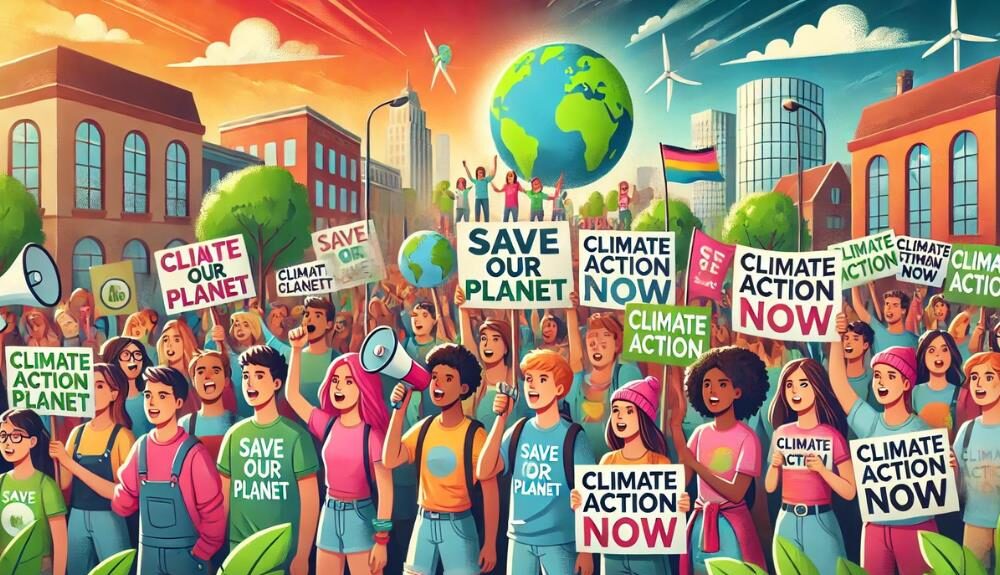The climate crisis continues to dominate global conversations, but a new wave of leaders has emerged to address it head-on. Youth climate activism in 2025 is more organized, innovative, and impactful than ever before. From school strikes to global summits, young activists are steering the conversation toward climate justice and holding governments accountable.
This article explores the strategies, successes, and challenges of youth-led climate movements and their role in shaping a sustainable future.
Introduction: The Power of Youth in Climate Activism
Young people today are growing up in a world defined by the climate crisis. Armed with technology, education, and passion, they’ve risen as vocal champions for the planet. Unlike previous generations, these activists are harnessing social media and grassroots organizing to create tangible change.
In 2025, the message is clear: The youth aren’t just participating—they’re leading the charge. Let’s delve into how their efforts are reshaping the future of climate activism.
Why Youth Movements Are Crucial in 2025
Youth movements play a pivotal role in climate activism for several reasons:
- Urgency: With their futures on the line, young people demand immediate action on climate issues.
- Fresh Perspectives: They bring innovative ideas to tackle longstanding environmental challenges.
- Influence: The collective voice of young activists amplifies global awareness and accountability.
Their energy and determination inspire a sense of urgency that resonates with leaders and communities alike.
The Key Drivers Behind Youth Climate Movements
Social Media as a Tool for Change
Social platforms like TikTok, Instagram, and Twitter have become powerful tools for young activists to:
- Spread awareness about climate issues.
- Organize global events and strikes.
- Connect with like-minded individuals and groups worldwide.
For example, hashtags like #ClimateStrike and #FridaysForFuture have united millions in a shared mission.
Education and Awareness
Today’s youth are more informed about the climate crisis than ever before. Many have integrated sustainability into their education, learning about:
- Renewable energy solutions.
- The impact of corporate pollution.
- Climate policy and advocacy.
This knowledge empowers them to make evidence-based demands for change.
Youth Activism in Action: Major Movements of 2025
Fridays for Future
What began with Greta Thunberg’s school strike has now evolved into a global movement. In 2025, Fridays for Future continues to mobilize millions, with youth-led protests happening in over 100 countries.
The Green New Decade Initiative
A coalition of young activists and scientists, this initiative pushes for aggressive climate policies, focusing on renewable energy, reforestation, and corporate accountability.
Local Grassroots Movements
From community clean-ups to localized policy changes, grassroots efforts are gaining traction in 2025, with youth leaders at the helm.
How Youth Movements Are Pushing for Climate Justice
Climate justice isn’t just about reducing emissions; it’s about addressing inequality. Youth movements are emphasizing:
- Equity: Ensuring marginalized communities aren’t left behind in the transition to a sustainable future.
- Accountability: Holding corporations and governments responsible for environmental harm.
- Global Solidarity: Bridging the gap between developed and developing nations in climate solutions.
Their focus on justice is reshaping the broader climate movement, making it more inclusive and impactful.
Challenges Youth Activists Face
Despite their success, young activists encounter several obstacles:
- Political Resistance: Governments often dismiss youth demands as impractical or naive.
- Funding Limitations: Many movements rely on crowdfunding or donations to sustain their efforts.
- Burnout: The emotional toll of fighting for the planet can lead to activist fatigue.
Yet, their resilience and adaptability ensure the movement continues to grow.
Success Stories: Youth-Led Climate Wins
- Global Climate Agreements: Youth activism has influenced stricter emission targets and global summits like COP30 in 2025.
- Corporate Accountability: Campaigns targeting big polluters have led to significant corporate commitments to sustainability.
- Legislative Changes: From single-use plastic bans to renewable energy policies, youth-driven advocacy has led to tangible progress.
These wins are proof that the efforts of young activists are yielding real-world results.
How to Support Youth Climate Activism
You don’t need to be young to join or support the movement. Here’s how you can contribute:
- Amplify Their Voices: Share their messages and campaigns on social media.
- Donate: Financially support youth-led organizations and initiatives.
- Join Protests: Show solidarity by participating in marches or events.
- Educate Yourself: Stay informed about the climate crisis and solutions.
Your support can help amplify their impact and drive lasting change.
Conclusion: The Future is in Their Hands
In 2025, youth climate activists are not just raising awareness—they’re creating tangible change. By addressing climate justice, leveraging technology, and pushing for accountability, they’re redefining what it means to fight for the planet.
Their resilience and vision inspire hope for a better future. As supporters, we must amplify their efforts and join them in creating a world that thrives sustainably. Together, we can ensure the next generation inherits a healthier, more equitable planet.




